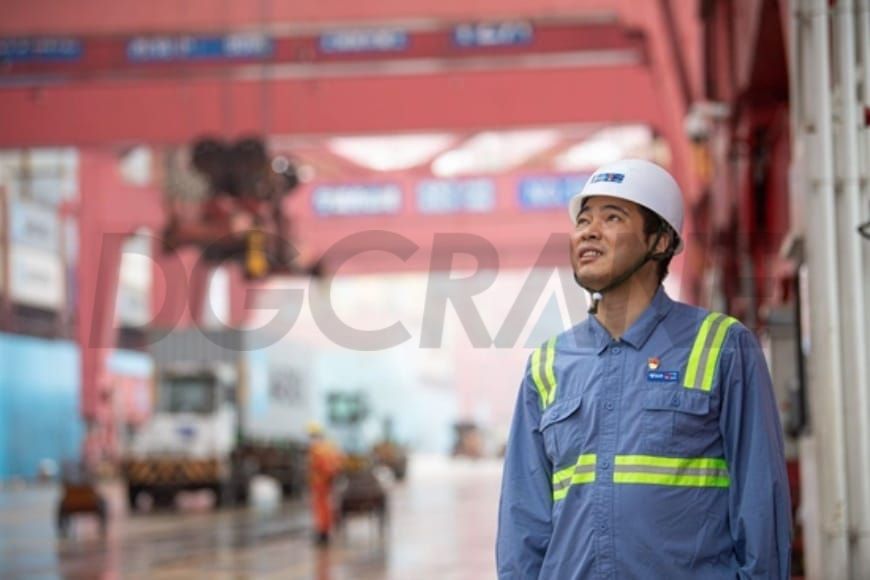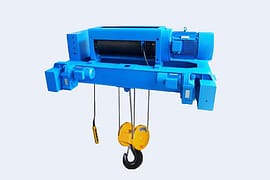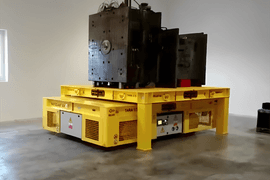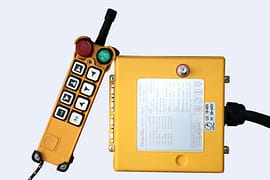Overhead Crane Safety Operation: 6 Common Misconceptions You Need to Know
Table of Contents

Today, nearly every product comes with warning labels, and some even have multiple warning labels, warning lights, and alarms. With so many danger warnings encountered in the workplace, many people have become desensitized to these alerts. Unfortunately, this situation hinders our efforts to convey truly meaningful safety information, especially when the safety warnings we need to communicate are based on common sense. In the context of Overhead Crane Safety Operation, this desensitization can be particularly dangerous, as certain safety protocols may be overlooked or misunderstood.
To ensure both the protection of lifting equipment and the safety of employees, it's essential to address and correct common misconceptions. By debunking these myths and presenting the facts, you can improve crane safety and prevent potential accidents that could save lives. Understanding the following myths and facts will help clarify key points and enhance overall safety practices.
Overloading
Misconception:
There's no need to worry about crane overloading, as the manufacturer has already factored in the safety margin during design.
Fact:
This is one of the most dangerous misconceptions concerning bridge cranes. While certain parts of a bridge crane may incorporate safety factors in their design, this does not apply to the entire crane system. Furthermore, the building to which the crane is attached may not have similar safety factors in place.
There have been multiple safety incidents in which the safety margin of the crane exceeded that of the building, leading to structural collapse. Cranes and buildings are sometimes constructed by the lowest bidders—how can you expect them to add extra load-bearing capacity to the equipment or the building? Would you be willing to gamble with your life on this?
In reality, only certain cranes are equipped with overload protection systems. Understanding this is crucial as it helps prevent operators from taking unnecessary risks. Therefore, installing affordable load-checking devices on various crane models is a practical choice.
It's impossible for the human eye to gauge a load's weight accurately, even if the weight of the load is clearly labeled. Problems can also arise when operators forget to remove load-binding chains and anchoring bolts.
Therefore, equipping cranes with load-checking devices is necessary; they are inexpensive and can effectively prevent many easily avoidable issues.
Side Pulling
Misconception:
As long as the crane’s rope is long enough, it can pull a small steel block horizontally from a nearby pile of cargo, since its weight is insignificant compared to the crane’s lifting capacity.
Fact:
This is one of the most common misconceptions about bridge cranes. Both the American Crane Manufacturers Association and the Crane Manufacturers’ Association agree that cranes and hoists are designed to lift or lower loads vertically. Side pulling introduces a range of dangers.
Firstly, the steel rope may slide off the drum, rubbing against other ropes, which can lead to wear. Sometimes, the rope may become entangled with the drum, increasing the tension on the rope. On the other hand, side pulling causes an unpredictable force direction, which is even worse than rope wear.
For example, if the bridge girder of a bridge crane is taller than it is wide and the load is lifted vertically, when the crane pulls the load at a 45-degree angle, the crane will be subjected to equal forces in both the vertical and horizontal directions. Even if the load is half the crane’s rated capacity, it can still cause the girder to collapse.
Upper Limit Switch
Misconception:
As long as the upper limit switch is not activated, the load can be lifted to any height.
Fact:
Although this may seem like common sense, it is absolutely incorrect. The upper limit switch is designed to prevent the hook from colliding with the rope drum. It is a safety device, not an operational control. If the upper limit switch fails, the hook and the rope drum will collide, potentially causing the rope and the load to fall.
If you need an operational upper limit switch, a second switch should be installed in a fail-safe mode. This way, if the operational switch fails, the hook will eventually hit the upper limit switch, causing the lifting mechanism to shut down.
If the limit switch fails while the load is at the extreme, the operator should seek assistance.
Without a secondary limit switch on the rope, no alarm will be triggered before the load falls due to the failure of both switches.
Two-Stage Braking
Misconception:
All cranes are equipped with a two-stage braking system, so workers can safely work beneath the load without fear of injury.
Fact:
Like the previous misconception, this might seem like common sense but is actually quite dangerous. All cranes must have both a primary and secondary braking system. All electric cranes are equipped with either a disc or drum-type primary brake, which ensures that if the system loses power, the braking mechanism will hold the load until power is restored.
As for the secondary brake, some crane manufacturers use mechanical load brakes, while 80% of cranes use regenerative brakes. Mechanical load brakes can effectively control the load if the primary brake fails, but they generate a lot of heat and are not suitable for loads over 30 tons. Furthermore, they are expensive and are rarely used.
Regenerative brakes, on the other hand, cannot control the load if the primary brake fails but can significantly reduce the speed of the load.
Therefore, you should never stand beneath a load on a crane. Whether the load is free-falling or descending at a so-called “controlled speed,” it can cause fatal injuries to those underneath.
Reverse Braking Control
Misconception:
The easiest way to control the crane’s speed when moving in one direction is to lightly press the reverse braking button.
Fact:
In the past, this was indeed a reasonable way to control speed, as older electric motors and current contacts were larger and heavier, which helped with heat dissipation.
However, today’s electric motors and current contacts are more compact, and overheating may indicate a malfunction in the components. To protect these more delicate electronics and motor brakes, manufacturers have developed various soft-start and soft-stop methods, typically using AC variable frequency drives (VFDs). These devices reduce the size of the motor and current contacts, provide adjustable acceleration and deceleration curves, and offer dynamic braking, eliminating the need for reverse braking.
You can press the reverse braking button, but unless the crane has completely stopped, it will not work. For modern VFD-controlled cranes, each braking or starting action involves a pre-set deceleration buffer. It’s like driving a car—you must slow down before stopping or accelerate before reaching top speed.
Daily Inspections
Misconception:
Since the crane worked fine yesterday, it will work fine today.
Fact:
Daily inspections are the simplest yet most often overlooked safety guideline in crane operation. These inspections do not require maintenance personnel but are simply common-sense checks. Operators only need to spend a minute or two before each shift.
- Look:
Is the crane in operational condition? Are there any parts on the ground? Is there anything still hanging on the hook? Are there signs of collisions or damage?
- Listen:
Start the crane and listen for any unusual sounds. Does the hook stop ascending when it hits the upper limit switch? Do the trolley and bridge make normal sounds during operation? Does the trolley work in all directions? Are the button directions aligned with the trolley’s movement? Does the stop switch reset and function correctly?
- Record:
Check the crane’s operation and inspection records, and write down your findings.
These misconceptions may only represent a small fraction of crane safety issues, but they account for the majority of crane-related accidents. Understanding and avoiding them will help improve crane safety and efficiency.
References: Misunderstandings in the Safe Operation of Overhead Cranes
Contact Details
DGCRANE is committed to providing the professional Overhead crane products and relavent service. Exported to Over 100 Countries, 5000+ Customers Choose Us, Worth to be Trusted.
Get In Touch
Fill out your details and someone from our sales team will get back to you within 24 hours!
























































































































